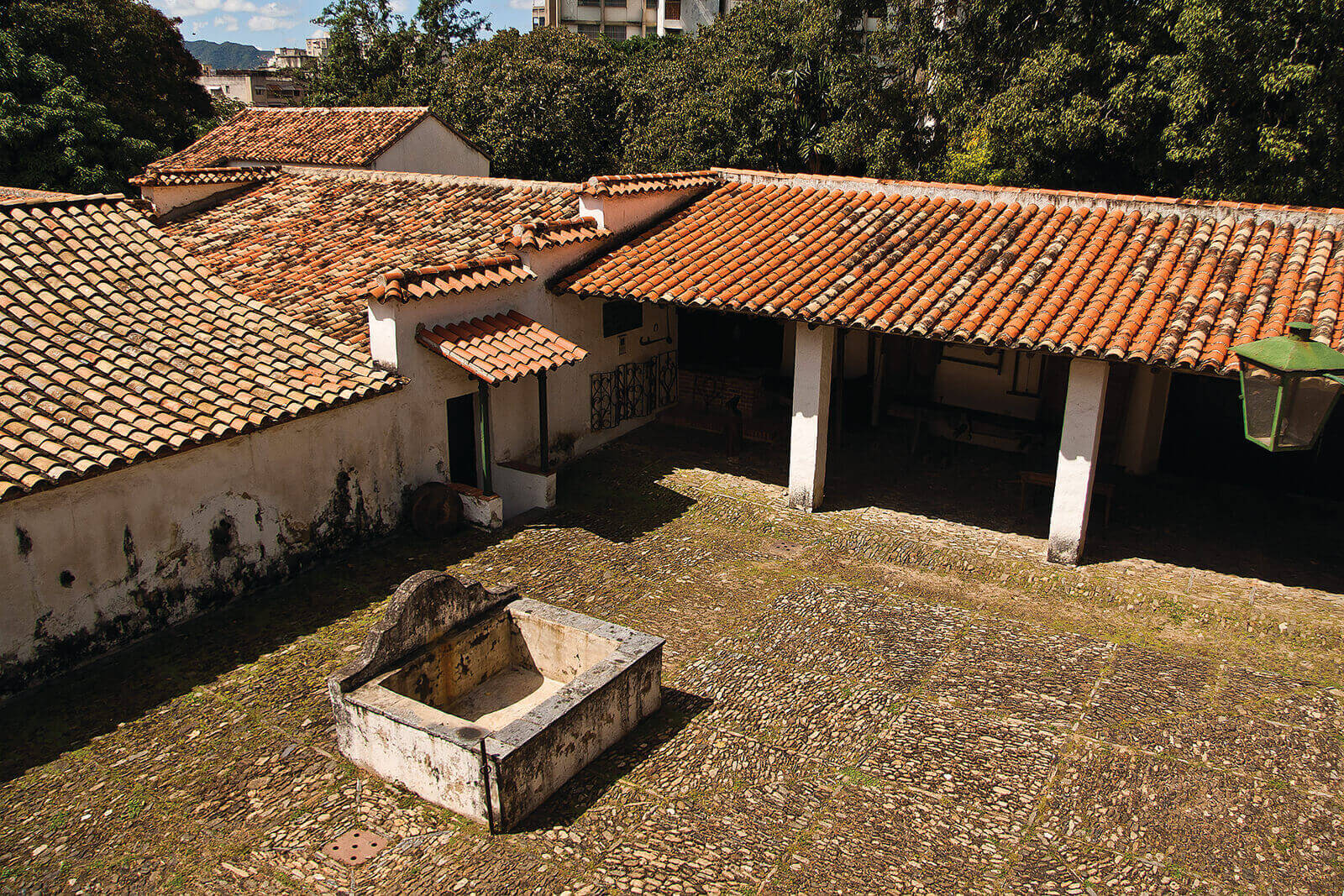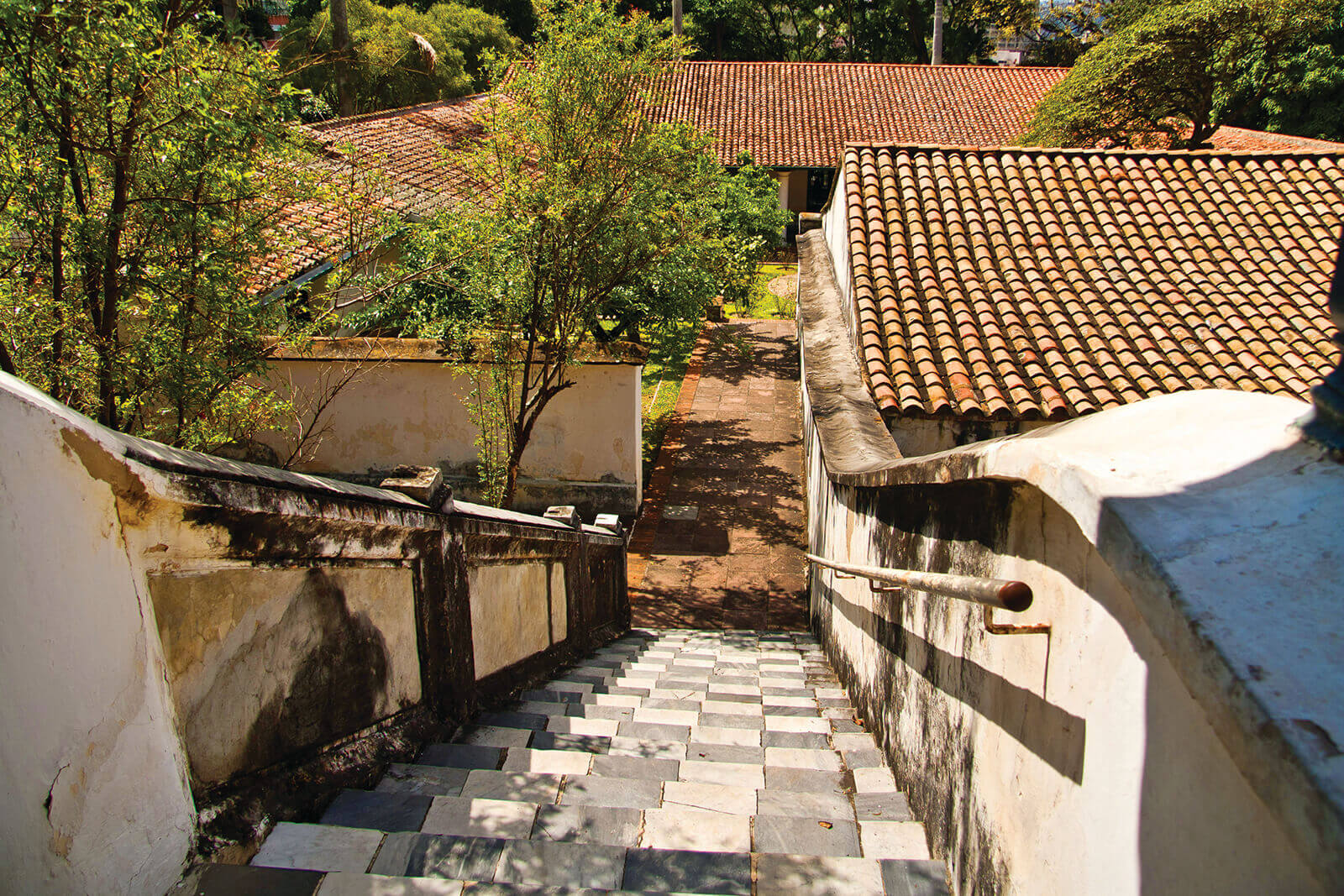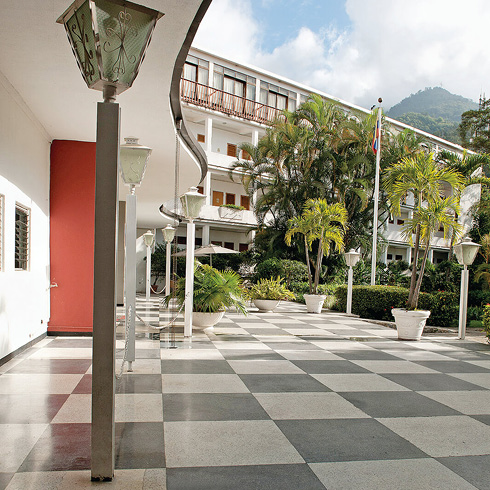NE-13
By the second half of the eighteenth century the lands surrounding Anauco river and Gamboa creek, on the outskirts of Caracas, were farmland. At the end of this period, Juan Javier Mijares de Solórzano y Pacheco acquired a riverside land there, overlooking the valley of Caracas, and built a luxurious country home, with rectangular floor plan, intended as a leisure home. The one-story house is distributed around a courtyard surrounded by corridors, dividing the noble areas (living rooms, bedrooms, dining room, chapel) from the servant areas (kitchen, stables). The courtyard is presumed to be one of the first geometric «gardens» of the time, with a square shape articulated to the house’s symmetry axis. The side entrance to the house, protected by a small roof, is in harmony with fronts of urban houses, whose high wooden door comfortably allowed the entry of a horse and rider. Annexed to the entrance is the small coach house and to the south is a corridor open to the garden. Following the reestablishment of the patriot government in 1821, the Solórzano family, fearing for their safety, immigrated to Curacao and the house became government property. Later acquired by the Marqués del Toro (1826), for nearly four decades the house was witness to parties and celebrations for personalities of the time, and came to be known as Quinta Anauco. Donated to the nation in 1958, it now houses an important collection of colonial art from the seventeenth and eighteenth centuries.

plant

JAC

GCM




